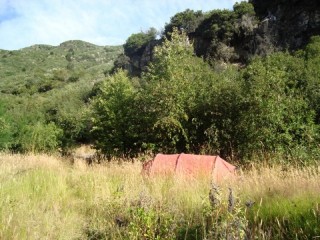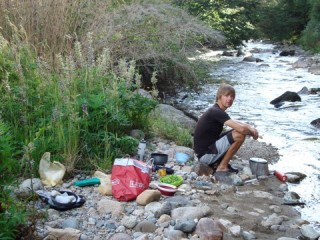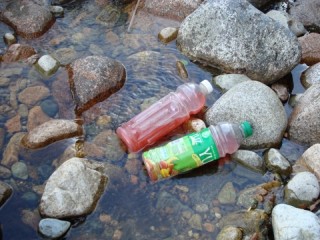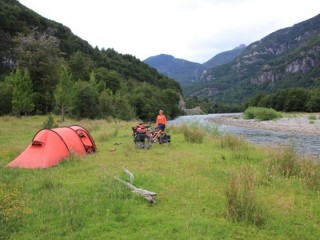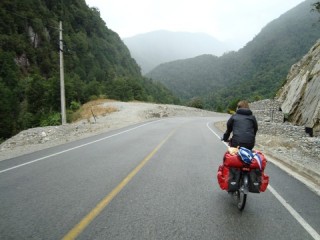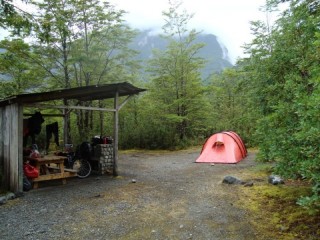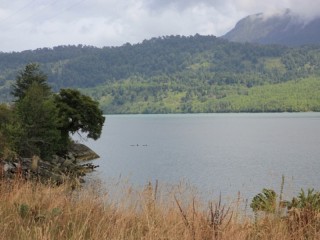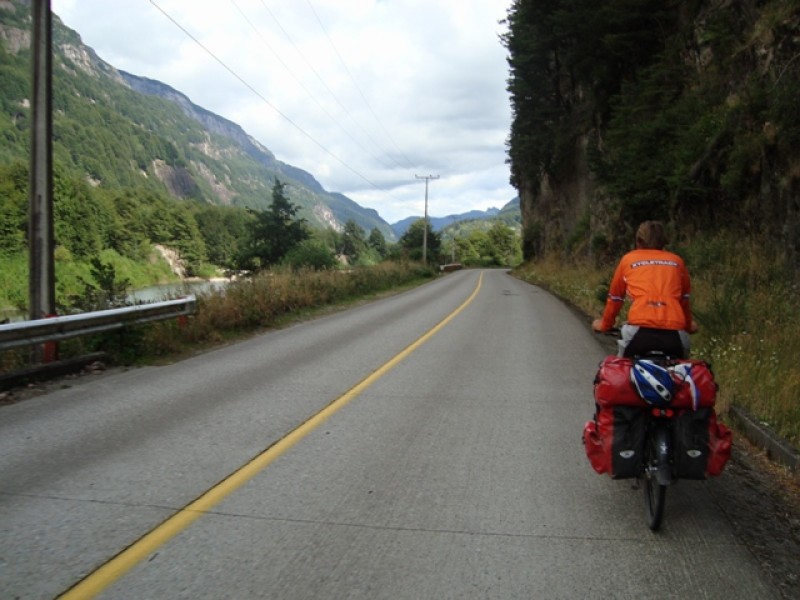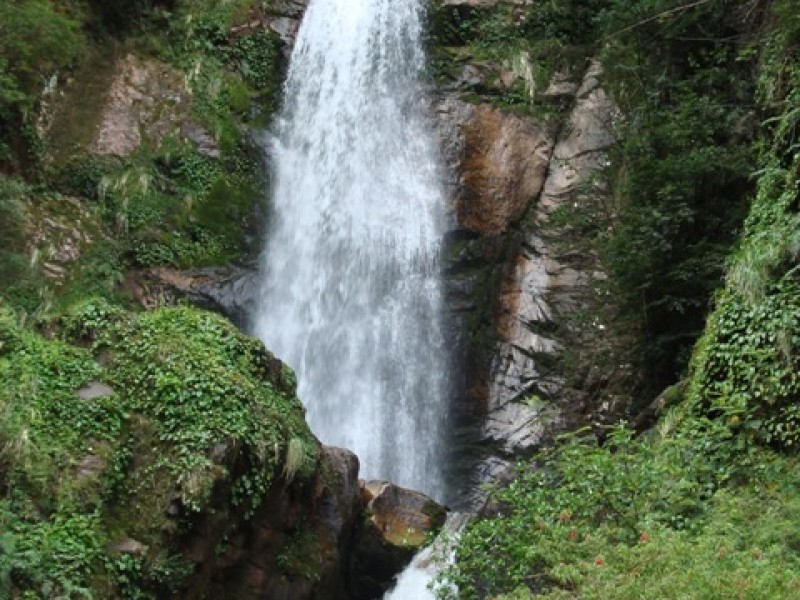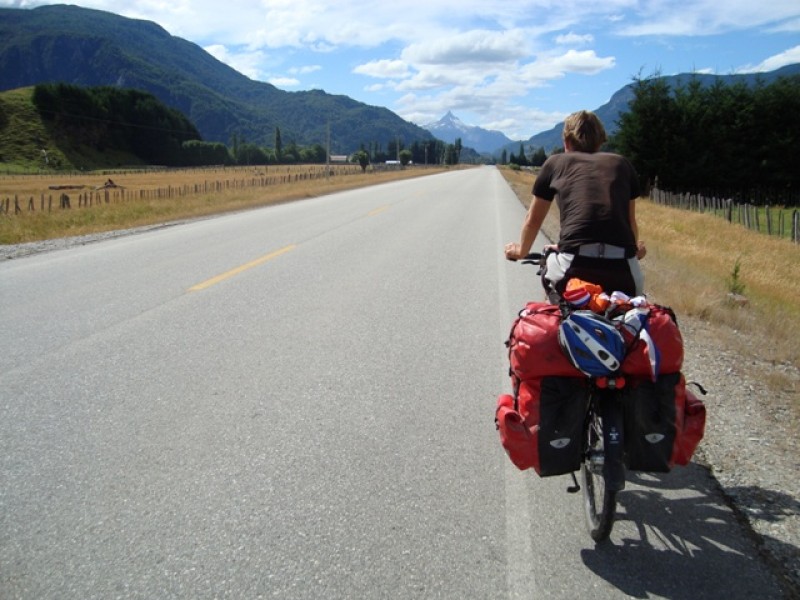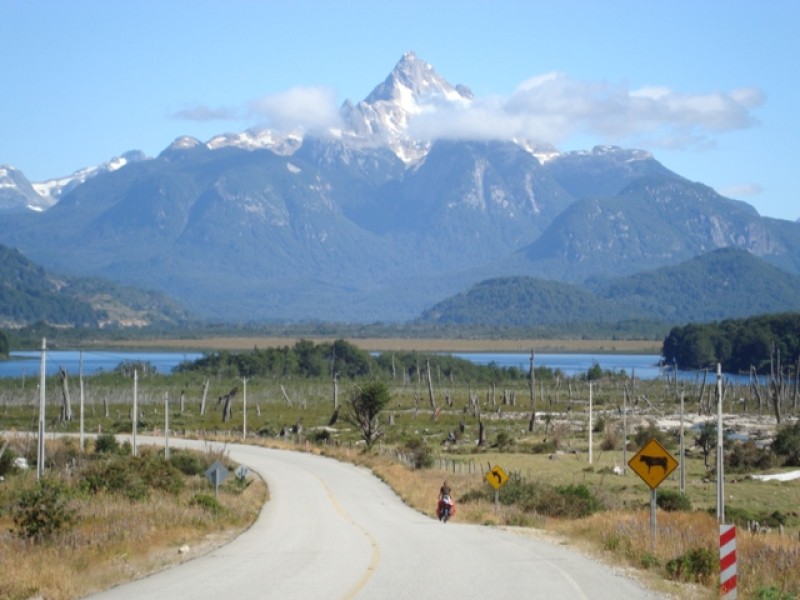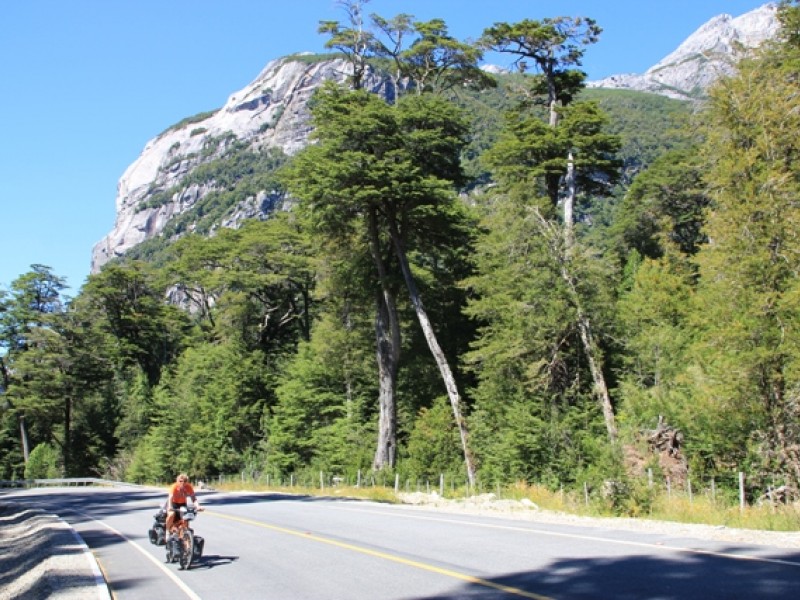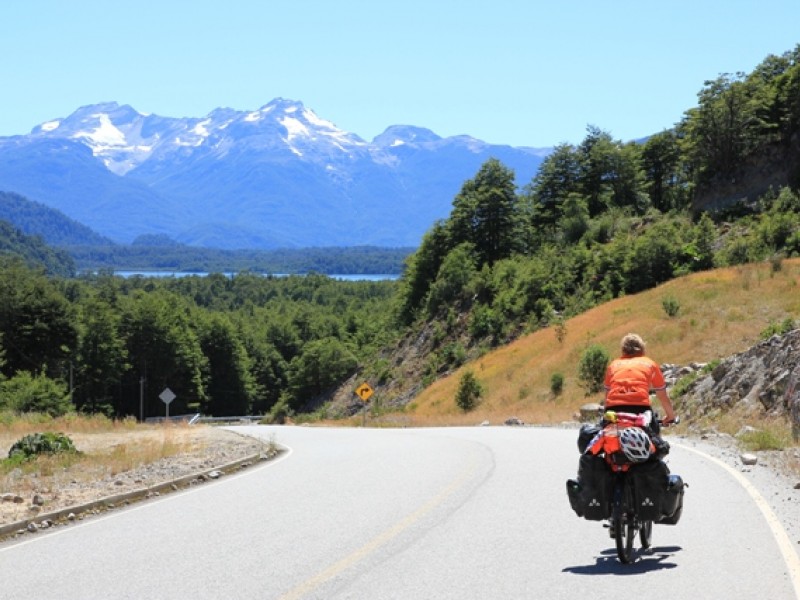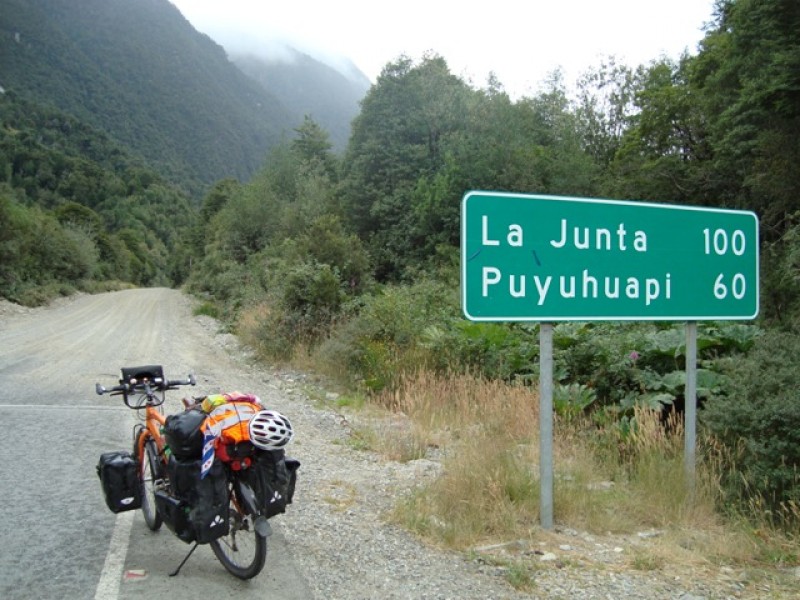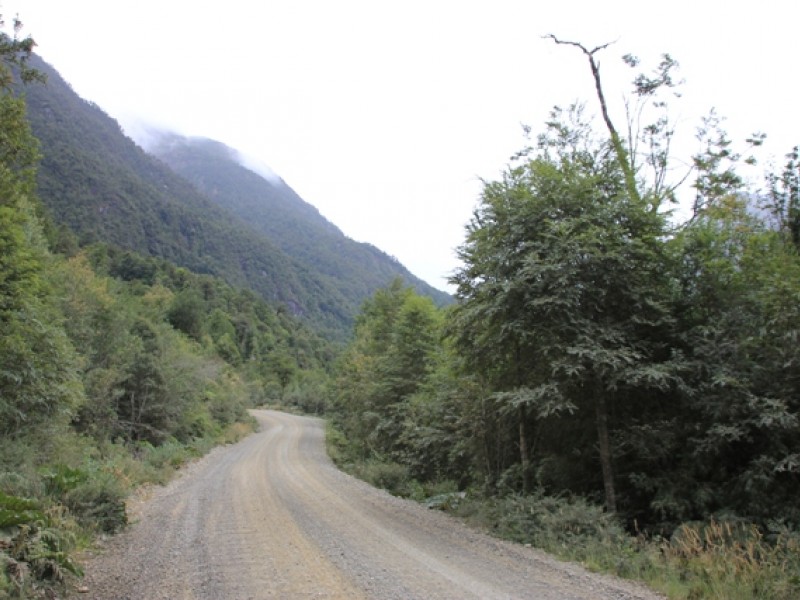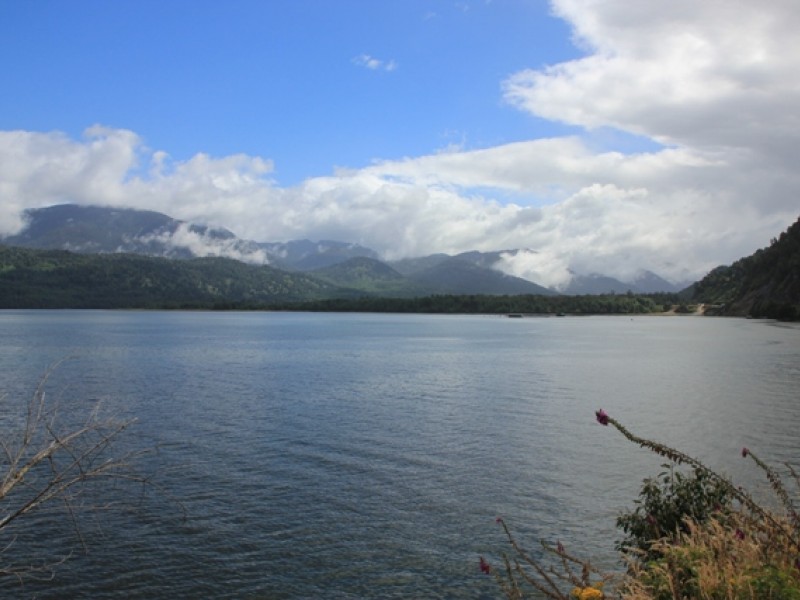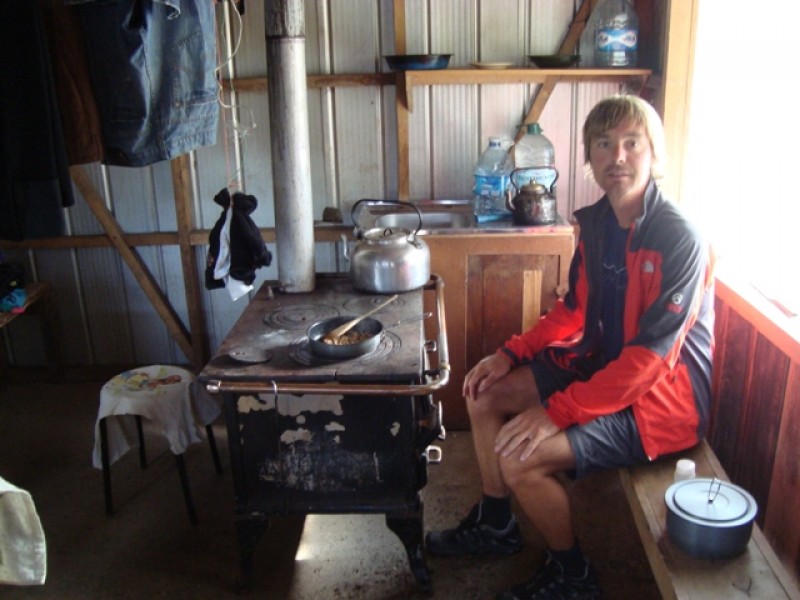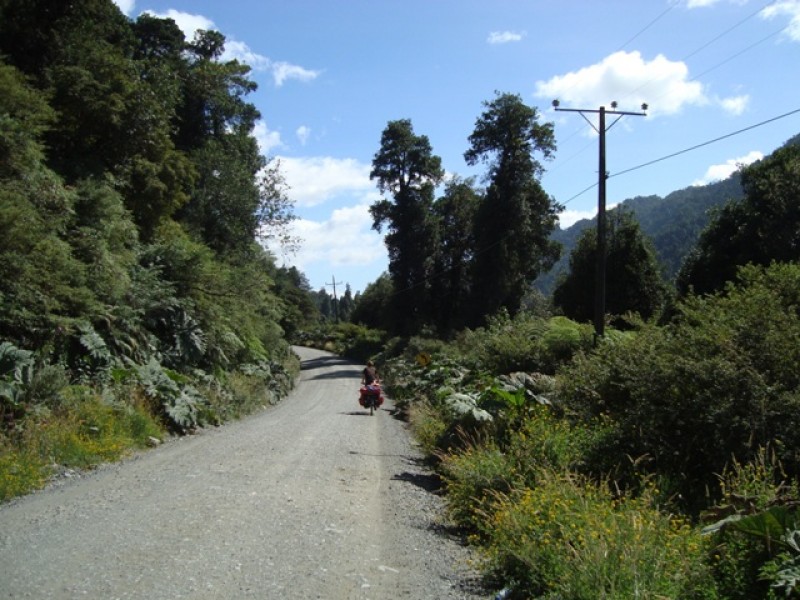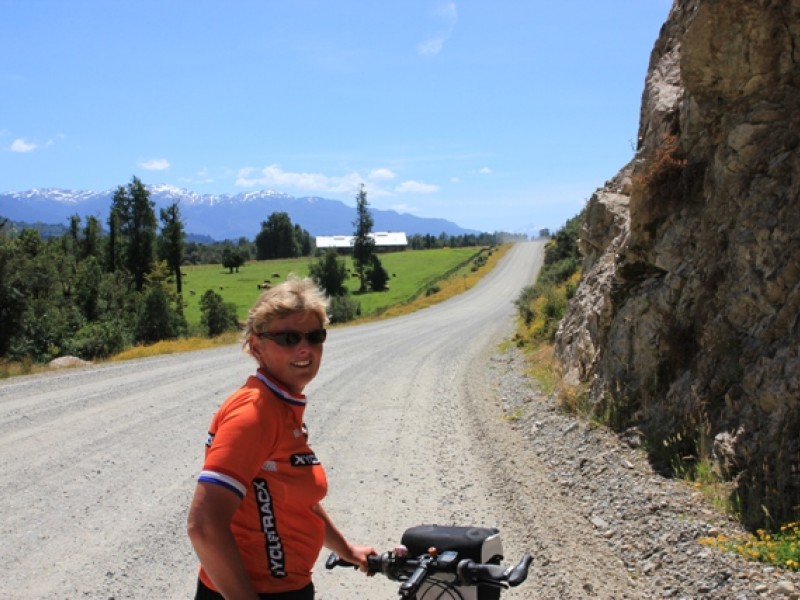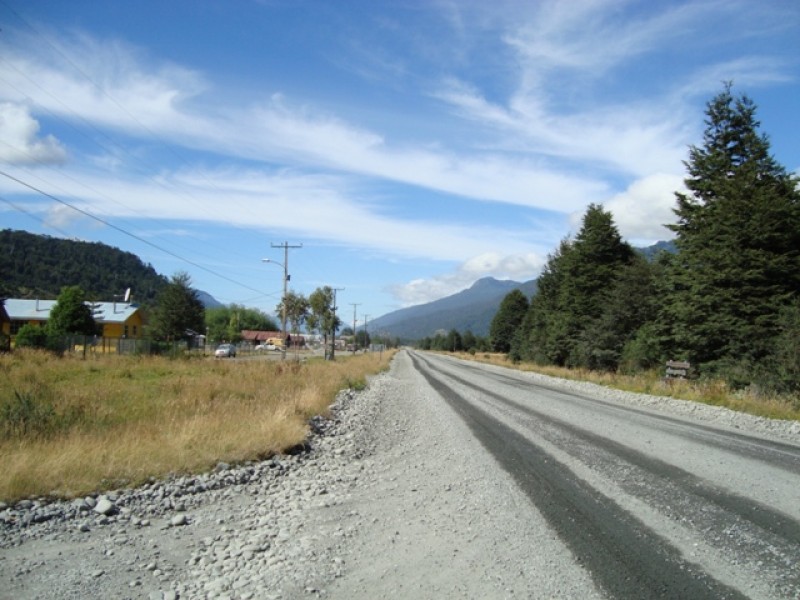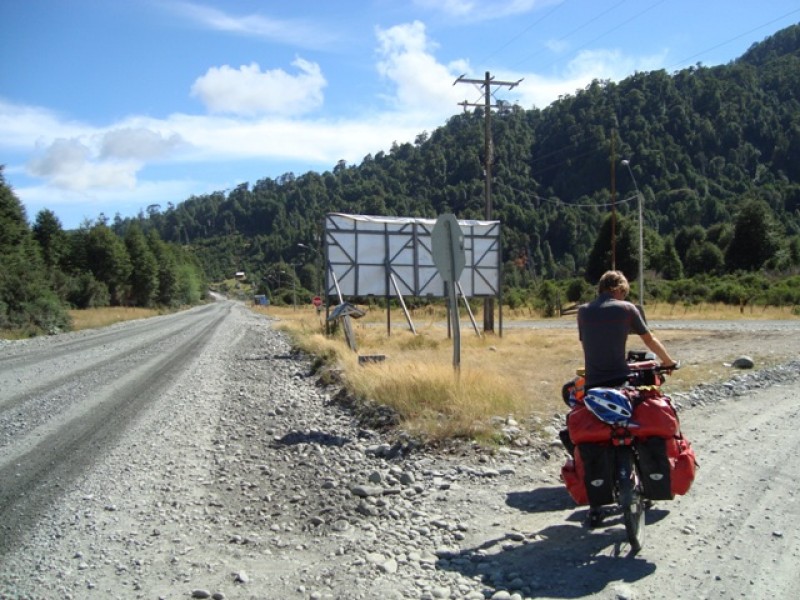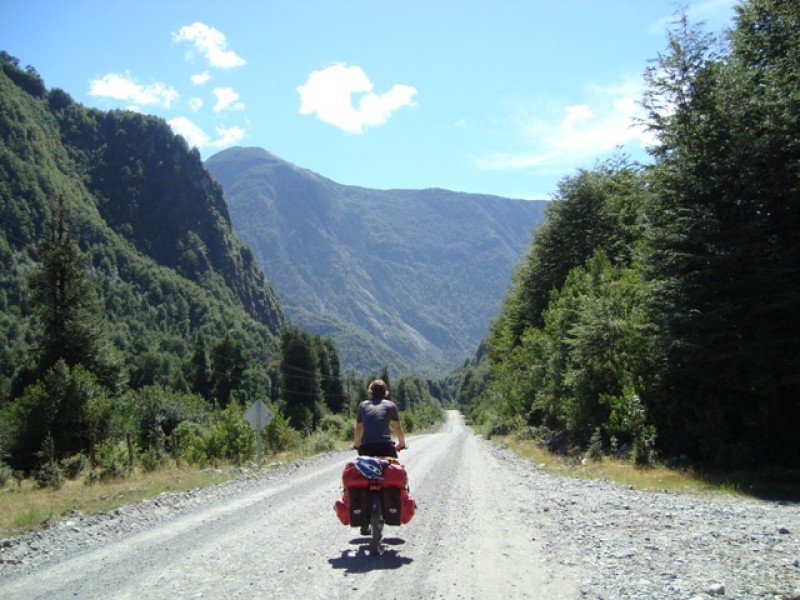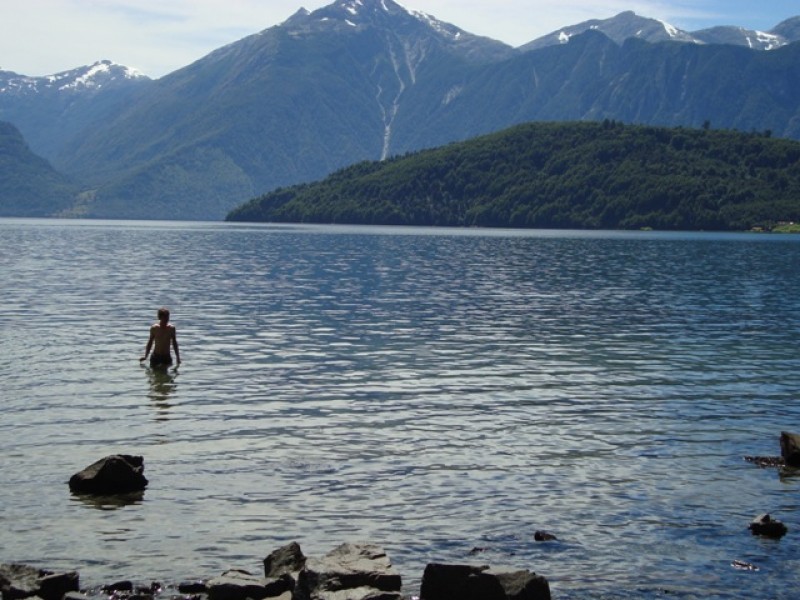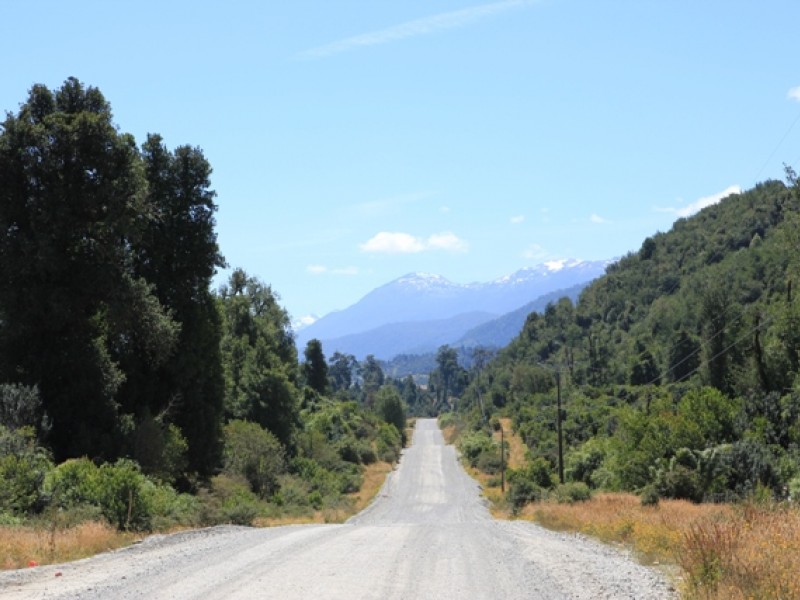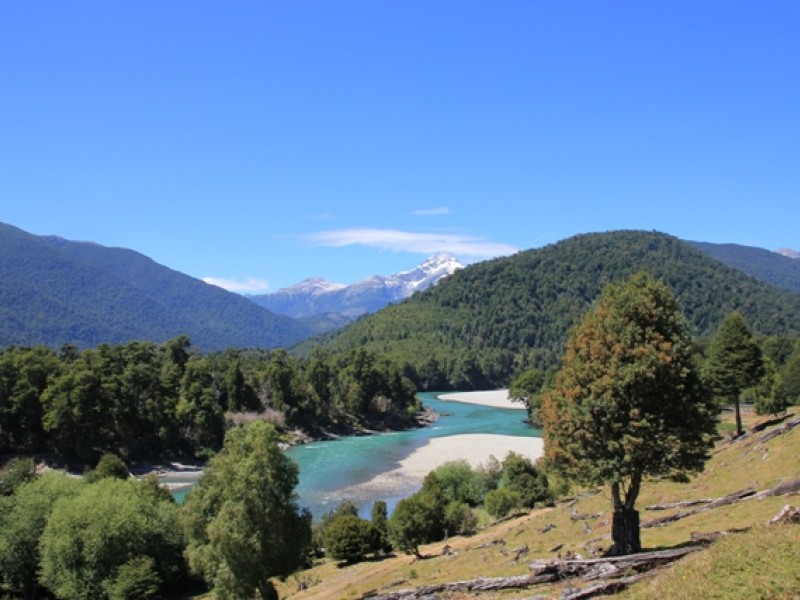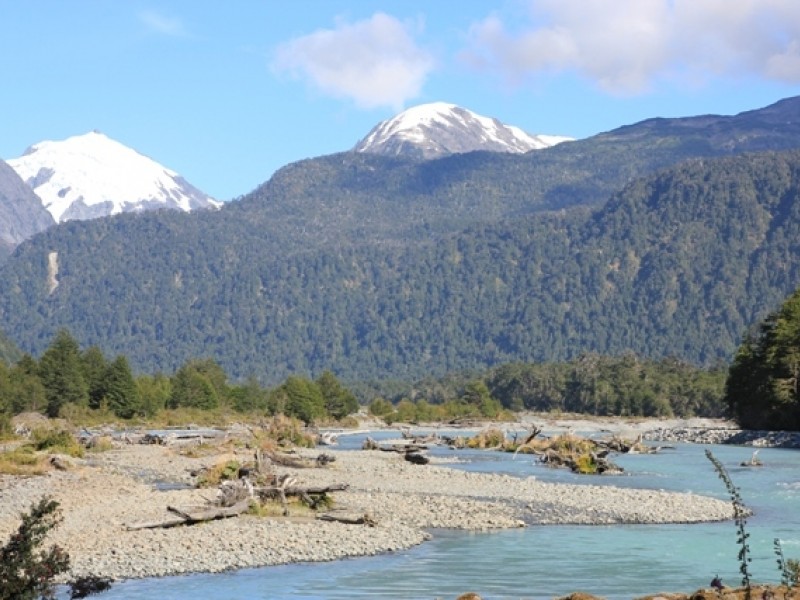When we left Coyhaique, it was raining a little bit, but the temperature was good for cycling. Fortunately it didn’t rain for long and the temperature remained very nice. We were still cycling on tarmac, so it went very well. Also because most of the route was flat or went downhill. A few small hills, but nothing special. All in all a wonderful day of cycling! The views were nice also, we rode through 2 fairly narrow valleys. After about 90 kms (55 miles) we arrived in Villa Manihuales, but the campground there was so bad that we decided to go on. We found a great camping spot about 10 kms (6 miles) after the town, right next to a small river. We had cycled for about 105 kms (61 miles), so it had been an old fashioned day of cycling! Great!
The day after was also a good day of cycling on tarmac, but also the last complete day on tarmac. We knew the tarmac would end and also where it would end. Exactly where it ended started a longer climb for which many cyclists had warned us. But first another night in a beautiful spot, very sheltered and right next to the river.
We cycled the pass in the rain, too bad because it’s supposed to be very beautiful over there. Fortunately the pass wasn’t as bad as we had expected, it was only 7 kms (4 miles) up on a road that was in pretty good condition. The road went through a rainforest (maybe that’s why it was raining…) and there’s a hike to a hanging glacier. We didn’t do that hike because of the rain and the clouds. We wouldn’t be able to see much anyway. Too bad… After a cold and wet downhill we went to the campground over there.
The next day the weather was a little bit better; instead of just rain, it were showers now. We cycled to the town of Puyuhuapi, about 25 kms (15 miles) further and went to a campground. Why would we cycle in that rain if we didn’t have to? We could sit inside to warm up and had time to walk through the (small) town. The road followed an inlet and when we were pretty close to the town we saw fins come out of the water. They were dolphins! About 4 of them, right there in front of us! Very cool of course! The fins and backs rose out of the water a few more times and then they were gone.
The town was founded in 1935 by German immigrants, so there are some German influences like names and houses in German style. Also (relatively) many German tourists…(click on pictures for slideshow)
Fortunately the rain stopped and when we cycled away from Puyuhuapi the next day, the sun was shining again. The road had been very good before the town and that continued until the next town. A very good road and not so many hills, so it was good cycling again. After the next town (La Junta), that was over. The road became worse and worse inspite of the roadwork.
In Villa Santa Lucia, the Carretera Austral ended for us (officially), because we went to the east, to Futaleufu close to the Argetinian border. The official Carretera goes on to the north, to Chaiten and after that further to the north.
The whole stretch to Villa Santa Lucia and after all the way to Futaleufu (total of 160 kms; 100 miles) was in a very poor state. We thought we that misery was over when we got off the Carretera in Santa Lucia, but no… The whole stretch to Futaleufu was very bad, maybe even worse than before. We were right back to our previous average of around 10 kms (6 miles) per hour. And with the bad road came the heat again. The thermometer went up to 40 degrees C (upper 90’s) again. So we did short distances each day and went swimming during lunch ones.
Between La Junta and Santa Lucia the surroundings weren’t too interesting; a lot of farmland. After Santa Lucia the views became nice again, with snowy mountains, rivers and valleys (click on pictures for slideshow).
Now we’re in the bordertown of Futaleufu, where we take a few days of rest on a campground close to the lake. We cycled for about a week without a real (whole) restday, so we can use a little rest again. After we leave here, there’s about 400 kms (240 miles) to cover to get to Bariloche where the rich and famous of Argentina spent their vacations. They call it ‘Little Switserland’, so we guess it looks like Switserland over there.

